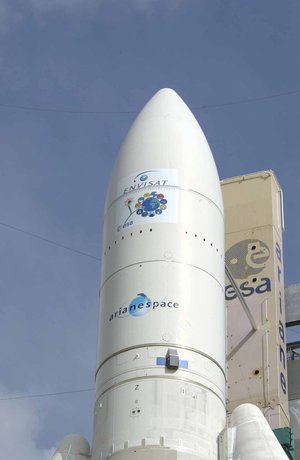Accept all cookies Accept only essential cookies See our Cookie Notice

About ESA
The European Space Agency (ESA) is Europe’s gateway to space. Its mission is to shape the development of Europe’s space capability and ensure that investment in space continues to deliver benefits to the citizens of Europe and the world.
Highlights
ESA - United space in Europe
This is ESA ESA facts Member States & Cooperating States Funding Director General Top management For Member State Delegations European vision European Space Policy ESA & EU Space Councils Responsibility & Sustainability Annual Report Calendar of meetings Corporate newsEstablishments & sites
ESA Headquarters ESA ESTEC ESA ESOC ESA ESRIN ESA EAC ESA ESAC Europe's Spaceport ESA ESEC ESA ECSAT Brussels Office Washington OfficeWorking with ESA
Business with ESA ESA Commercialisation Gateway Law at ESA Careers Cyber resilience at ESA IT at ESA Newsroom Partnerships Merchandising Licence Education Open Space Innovation Platform Integrity and Reporting Administrative Tribunal Health and SafetyMore about ESA
History ESA Historical Archives Exhibitions Publications Art & Culture ESA Merchandise Kids Diversity ESA Brand Centre ESA ChampionsLatest
Space in Member States
Find out more about space activities in our 23 Member States, and understand how ESA works together with their national agencies, institutions and organisations.
Science & Exploration
Exploring our Solar System and unlocking the secrets of the Universe
Go to topicAstronauts
Missions
Juice Euclid Webb Solar Orbiter BepiColombo Gaia ExoMars Cheops Exoplanet missions More missionsActivities
International Space Station Orion service module Gateway Concordia Caves & Pangaea BenefitsLatest
Space Safety
Protecting life and infrastructure on Earth and in orbit
Go to topicAsteroids
Asteroids and Planetary Defence Asteroid danger explained Flyeye telescope: asteroid detection Hera mission: asteroid deflection Near-Earth Object Coordination CentreSpace junk
About space debris Space debris by the numbers Space Environment Report In space refuelling, refurbishing and removingSafety from space
Clean Space ecodesign Zero Debris Technologies Space for Earth Supporting Sustainable DevelopmentLatest
Applications
Using space to benefit citizens and meet future challenges on Earth
Go to topicObserving the Earth
Observing the Earth Future EO Copernicus Meteorology Space for our climate Satellite missionsCommercialisation
ESA Commercialisation Gateway Open Space Innovation Platform Business Incubation ESA Space SolutionsLatest
Enabling & Support
Making space accessible and developing the technologies for the future
Go to topicBuilding missions
Space Engineering and Technology Test centre Laboratories Concurrent Design Facility Preparing for the future Shaping the Future Discovery and Preparation Advanced Concepts TeamSpace transportation
Space Transportation Ariane Vega Space Rider Future space transportation Boost! Europe's Spaceport Launches from Europe's Spaceport from 2012Latest
Envisat Launch Summary
Thank you for liking
You have already liked this page, you can only like it once!
On the night of the 28 February to 01 March ESA's new Earth Observation satellite was successfully launched on board an Ariane 5 rocket from Kourou French Guyana. This programme is a summary of the satellites journey from the test centre at ESA's ESTEC site (The Netherlands), to Kourou (French Guayana)and finally to polar orbit, 800km above the Earth on board an Ariane 5 rocket
The 5-minute A-roll contains split audio with an English guide track and is complemented by a B-roll with international sound only
A-Roll Script
On March 1st the European Space Agency's new global environment monitoring satellite ? ENVISAT ? was successfully put into orbit by the Ariane 5 rocket.
Its mission: to provide data that will support many different types of earth science research ? encompassing land, sea, the ice caps and the atmosphere ? effective monitoring of the processes leading to environmental and climatic change.
ENVISAT is the culmination of over ten years of research and development by ESA in partnership with 120 European and Canadian companies and institutes.
Scientists have already utilised the data collected from ESA's highly successful ERS 1 & 2 satellites - currently at the end of their life spans. Now, ENVISAT's ambitious and innovative payload - ten state-of-the-art earth monitoring instruments - will provide both continuity and evolution in the quest for more knowledge of our planets biosphere.
Weighing in at 8000 kilos, it's one of the largest satellites ever built and prior to launch, it went through
-
CREDIT
ESA/CNES/Arianespace -
LICENCE
ESA Standard Licence
-
Closed captions available Captions and subtitles are available (automatically generated by YouTube) - select your language using the YouTube player controls. A non-YouTube version is available using the 'download' button above.
-
VNR
-
-
-
-
-
-

Ariane 5 with Envisat on the launch pad

Ariane 5 with Envisat on the launch pad

Envisat on the launch pad

Ariane 5 with Envisat on the launch pad















 Germany
Germany
 Austria
Austria
 Belgium
Belgium
 Denmark
Denmark
 Spain
Spain
 Estonia
Estonia
 Finland
Finland
 France
France
 Greece
Greece
 Hungary
Hungary
 Ireland
Ireland
 Italy
Italy
 Luxembourg
Luxembourg
 Norway
Norway
 The Netherlands
The Netherlands
 Poland
Poland
 Portugal
Portugal
 Czechia
Czechia
 Romania
Romania
 United Kingdom
United Kingdom
 Slovenia
Slovenia
 Sweden
Sweden
 Switzerland
Switzerland

























